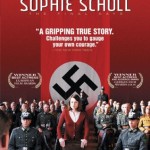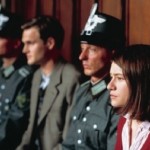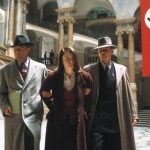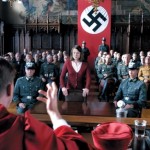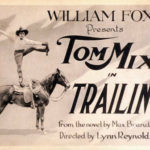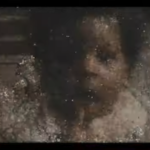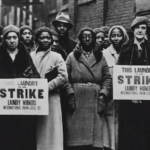An Interview with Marc Silberman
Marc Silberman, co-editor with Paul Cooke of Screening War: Perspectives on German Suffering (Camden House), talks about films on German wartime suffering and forgetting, and the archiving and availability of films on that subject.
Thinking about German suffering was common just after the war, was it?
 Yes. Paul Cooke and I make clear in our introduction that there’s a general widespread conviction that after about 2000 and the new millennium all of a sudden one could start talking about this taboo subject of how the Germans suffered in the war, especially after the war – the occupation, the aerial bombings of the German cities, and so on. But in fact when you go back and look at films and even look at literary documents, there is evidence that this was being talked about at the time. There wasn’t a taboo about it. It was simply that in the course of the postwar decades in both East and West Germany, other issues came up, a different attitude towards representation, about what happened during and after the war.
Yes. Paul Cooke and I make clear in our introduction that there’s a general widespread conviction that after about 2000 and the new millennium all of a sudden one could start talking about this taboo subject of how the Germans suffered in the war, especially after the war – the occupation, the aerial bombings of the German cities, and so on. But in fact when you go back and look at films and even look at literary documents, there is evidence that this was being talked about at the time. There wasn’t a taboo about it. It was simply that in the course of the postwar decades in both East and West Germany, other issues came up, a different attitude towards representation, about what happened during and after the war.
You note that more recently the subject has been revisited, so I take it that your intention is to revisit and compare the older and newer material?
Yes, to bring attention to this material, and also to look at it from a new perspective, from a post-millennial, a post-reunification perspective, from after the year 2000.
How does the older material contrast with the newer material?
That is what the essays focus in on. There’s one essay, for example, by Manuel Köppen [“The Rhetoric of Victim Narratives in West German Films of the 1950s”] that looks at several war films, several films about the war, war heroes. Also Jennifer Kapczynski [“Armchair Warriors: Heroic Postures in the West German War Film”] looks at those films, all films produced in the 1950s, and although the representation of German suffering or even dialogs about German suffering are not the main point in these films, it is a clear subtext. Both of these authors point out that there is a clear subtext in these films that the Germans, too, have been victims, that it’s not only the others, that is, the Jews in particular, who have been victimized.
In the films right after the war, was there any sense of German efforts to absolve themselves of guilt, or were these just expressions of anguish that people in Germany felt, too?
It’s both of them, both are them are quite prominent, in fact.
Certainly the dominant discourse about three years after the war, around the Nuremburg trials of 1946 and 1947, there was a lot of publicity, newspaper articles, editorials, journal articles about this issue of collective guilt because especially the Americans at first seemed to be pushing that idea that the Germans were collectively responsible for what happened, and collectively responsible for the war.
And this didn’t go over well in Germany because a lot of the Germans felt that they were victims, that they had been victims of
Hitler, of the war, they had been bombed out, they were living in poverty and misery, and how could they be guilty? They couldn’t be responsible, they couldn’t do anything; there was a bunch of monsters up there running the show.
So, this was a very prominent discourse and there were intellectuals who had more reasoned arguments about why this collective-guilt notion really wasn’t a very accurate description. We mention in our introduction the series of lectures published by Karl Jaspers, the philosopher – “The Question of Guilt,” Die Schuldfrage – very sophisticated arguments about different kinds of guilt that the Germans had. He differentiated between individual criminal guilt and collective political guilt. And people were very interested in that kind of sophisticated discussion at the time. The general population wasn’t, but there were intellectuals who were.
There was a discussion about absolving oneself of guilt. At the same time, there was in the course of the ’50s up into the ’60s a remarkable sense of forgetting, or ignoring as much as possible any attempt to look back at what individuals’ own complicity was, and what had happened. This often had to do with ideology, but it was often papered over by the rechanneling of energies into rebuilding Germany. There was a hunger for positive feedback for this reconstruction especially in the West but also in East Germany.
So that displaced any searching, serious attempt to deal with the past, and any sense of complicity.
These are fairly familiar stories that certainly German historians, people working on German literature and cinema know about. This is the familiar critique.
We’re building on that and trying to go back now and look more carefully now at films that are very different in their purpose. And they raise interesting questions because Germans are the losers. What kind of heroes can you have in a war film, when you are the losers, in a genre that is based upon good versus evil, and you happen to be on the other side because they won the war and they won it for good reasons.
That’s clearly a big problem in war films. And therefore the subtexts that are often not so obvious have to be pulled out in various ways – subtexts, dialogs…
You find some very careful work in the articles. There’s an article there by Sabine Hake [“Political Affects: Antifascism and the Second World War in Frank Beyer and Konrad Wolf”], working on East German cinema, where you have a somewhat different development of this issue because it was a Soviet-occupies country, and the Soviets had a very different official opinion of the Nazis, because they considered themselves to be the heirs of antifascism, of the anti-fascist resistance to the Third Reich.
How did this work itself out in film, both just after the war and more recently – was there a main discourse and interesting marginal discourses that might now seem more important, in retrospect?
I’ve mentioned some of the aspects of this after the war, in war films for example, where you’d sometimes have Jewish characters who appear but then they often are eliminated somehow or another in the process of the narrative – they die, they disappear, but there’s never any discussion of why they disappear or how they disappear. Or they are shown as victims.
One of the good example that Manuel Köppen spent some time on in his article [“The Rhetoric of Victim Narratives in West German Films of the 1950s”] is a Jewish woman who is in hiding, and it turns out she’s portrayed as a kind of brothel owner, a very questionable kind of character. So even though these are secondary and tertiary characters who come in, you do see that the Germans as they are portrayed are the ones who are suffering; it’s not the Jews; when they come up they come up in a different kind of context.
{Click on an image to expand}
Credit: Zeitgeist Films
What you find in some of the later films made in the 2000s, where we begin to have a really important tendency of historical films being made about the war, aimed directly at a much younger generation, at the current young generation, pedagogical films. Some of them have been exhibited in the United States and some have won Oscars. The Sophie Scholl film, for example, that Mark Rothemund brought out in 2005 [Sophie Scholl: The Final Days], a dramatization of the final days of a famous member of The White Rose, an anti-Nazi resistance movement] won an Oscar nomination, and was the third film made about on Sophie Scholl since 1970, using the same material, basically. They focused on the last days of The White Rose resistance movement. It was clear that the 2005 film is trying to provide a model for young Germans. Sophie Scholl is shown to be a very religious woman. The late-1970s films about Sophie Scholl are much more political and have a lot more information about the background of why The White Rose resistance members were willing to sacrifice their lives for their cause. You don’t get much impression about that in the more-recent, 2005 film.
Credit: Zeitgeist Films
Are these films contentious, these days? It there still a sense that some films are trying to seek absolution, or are they considered to be an effort to face up to the broader reality of what the war was, for a variety of people?
I don’t think they’re contentious. I think certainly within the area of scholarship about German films of the last 15 years, there has been a real bias against popular cinema. The 1950s cinema was seen as a popular genre cinema and with the break that came in the late ’60s, the rise of the new German cinema, the attention of film scholars has been on the art-house film in German cinema.
It was only in about the mid-90s that film scholars started to look at what had been projected as a genre cinema trying to compete with Hollywood unsuccessfully and began to look at these films as documents of what was going on in larger society.
So you can see our contribution, our book bringing together these scholars as one of these attempts to look at popular cinema of the 1950s and 1960s – and some contributions deal with television – to look at some of the films in a new way and specifically looking at them for evidence of to what extent German suffering in the 50s and 60s figured in these films, and then also in films of the 2000s.
You mention that there’s a problem of access to films, but ironically less a problem with access to East German films than to West German films. Starting with the West German films, why is there a problem of access.
This isn’t only a problem only for West German films, it’s a problem in general, access to films. They’re in archives, basically, and it’s a commercial endeavor to try to get them out of the archives and into circulation. So, if you don’t have a market for them, or if you don’t have someone who’s willing to market them, then you don’t get access to them.
The reason why there’s access to East German films, interestingly, is because when the state-owned East German production studios – that is, the DEFA studios – when they were sold after East Germany imploded, and the West German government took them over and they didn’t want to have a state-owned film company – there is no state-owned film company in Germany, it’s against the law for the state to be involved that way. They had to sell it off and the money they got for it, they put it into a foundation, the DEFA Foundation, and it has the mission of preserving and distributing the history of East German film.
So, there’s a source of money and there’s a group of specialized people who can get these films put out. And that’s why we have DVDs and subtitled versions, gradually, that are available in the marketplace.
There is nothing like that in West Germany. There is no government or independent foundation; there are simply commercial enterprises which go to the vaults and get the rights for certain films for which they think they can make a profit.
You have some museums, there are some communal cinemas, regional film boards which do try to get films out. You have one company that specializes in putting out German classic films from the Weimar Republic. They do excellent rereleases, but that’s very specifically for the Weimar cinema.
Especially for the 1950s films, the popular cinema, where the licenses, the rights are held by commercial film studios or in many cases by studios which no longer exists, it’s not easy to get to them and I don’t think there’s really a market for them. No-one in our book is arguing that there is a market for them or that they’re high-quality films that must be saved for posterity. But sometimes they were quite popular films in their own day.
In a sense, then, are your authors doing the archival work, reclaiming all there is that’s worth preserving from those films, which might not be worth viewing, even, other than for a study like yours?
Right, or for a retrospective, say. There are all sorts of reasons why you might want to go back and regenerate interest in a certain corpus of films, but that doesn’t always mean that there’s going to be a commercial market for them.
I have to say the situation is better in Germany than in the United States. For example, I have copies of most of the films, the historical ones, that we discuss in the book, and many of the authors do, too.
These films are played on television regularly in Germany, at odds hours of the night, or very late at night. You can tape them off the television. Some you can buy in commercial sets; I have a set of 1950s war films, 10 DVDs. But they’re coded for Region 2, they’re PAL DVDs, you need a multiregion machine to play them. They’re not for commercial distribution outside of Europe. They don’t have subtitles, for the most part.
Of the films you gained familiarity with, what films most impressed or surprised you?
It’s hard to say because I’ve been working on these films for 30 years, so it’s hard to be surprised by anything, any more.
I have to say, though, that I was very surprised by that the Sophie Scholl film I mentioned earlier. I met Marc Rothemund, we brought him to our university. We showed his film there, very early on, before it had gone into distribution. We had him as a special guest through the embassy in Washington DC. I knew well those two earlier Sophie Scholl films. It’s a well-made film; this guy is not an untalented filmmaker, but he mobilizes emotions, I felt, in such a manipulative way. He’d learned to do that so well, but that’s not the kind of film I really like. It was so clearly aimed at making an impression on young people, a very specific kind of impression. I found that kind of manipulative. That surprised me.
But that was seen as a positive approach. That film was picked up by the German government. There’s something related to high-school education, where they make little film booklets to accompany contemporary films, be they German or non-German, to distribute them to schools, so schools can teach the films. And there was one of these made with the Sophie Scholl film before it had even been picked up by a distributor. So there’s clearly an interest in a very specific representation of the past that this film provides.
Would the films that have come out in the 2000s rate as popular films, or art-house films, or what?
Some of them are television films, they run as television series, sometimes as multi-part television series. The Dresden film, for example, that’s discussed, [The Bombing of] Dresden is a two-part television film that had quite a large audience.
I would say they run the whole scope from films that are being launched as big-budget films to much smaller, artistic-type films.
One of the articles that’s about more recent films deals with two Holocaust representations; one however is about a priest who is in a concentration camp – that is, not a Jew; that is called Der neunte Tag (The Ninth Day), by Volker Schlöndorff, who is one of the new German cinema directors. The other one is in Brad Praeger’s article in the book. Both of those are smaller films; I’d say they are art-house films, and that’s what kind of distribution they had; they weren’t spectacular successes.
http://www.youtube.com/watch?v=LQyjX3yDK6k
That’s interesting in itself, that this is not simply an effort at popularizing this period; it’s something that is being looked at from a variety of angles?
That’s right. That’s correct.
And I think a lot of it – we mention this in our introduction – it has to do with the different generations that we’re cycling through – the post-war generation with those people who witnessed what was going on, and the children of that generation who basically fueled the student protest movement of the late 60s, and 1970s, which led into the new German cinema; and then the children of that generation, the post reunification generation, which was tired of the moralism of their parents’ generation and yet curious about their grandparents’ generation that was rapidly dying off, and to the most extent has now died off in the meantime.
Every generation has to make its own narratives about what went on. And things often things get distorted or they get changed when you’re three generations away from the actual events.
Is there any difference between the depictions and the movement to reconsider these things in film versus a larger social movement – there are books, including one from the same publisher that issued your book, that aren’t about film but are about the effort or tendency to revisit this period now, through new eyes. There is a larger project of reconsideration taking place, right?
Right. From the scholarly point of view there has been since the mid-1980s a highly developed discourse on memory politics in Germany. This started with what’s called “the babble of the historians” in the mid-1980s among academic historians about how to reevaluate the relationship between the Soviet gulags and the German concentration camps. That marks the beginning of it.
There is also the 40th anniversary of the end of the war. There were some important speeches given in German Parliament that were given by the German President. This began a whole process of reevaluating how one thinks about the past and what role memory plays, about renarrativizing the plays. By 1990s, it started in the 80s, but in the 1990s after Germany reunified, there as an incredible push for establishing museums and holocaust memorials.
This whole memorialization process was an issue of how one represents the past – or the future for the next generation, especially in museums.
The collapse of East Germany has established a similar, parallel discourse about how one looks back, how one represents, how one renarrativizes East Germany.
So I would say there’s quite a sensitivity in Germany, in general, about these kinds of questions. There’s a popularly sensitivity about it and there’s a highly sophisticated scholarly discourse on it.
Previous Post: Sara Driver's Film of a Paul Bowles Story Rediscovered
Next Post: Framing German Wartime Suffering

